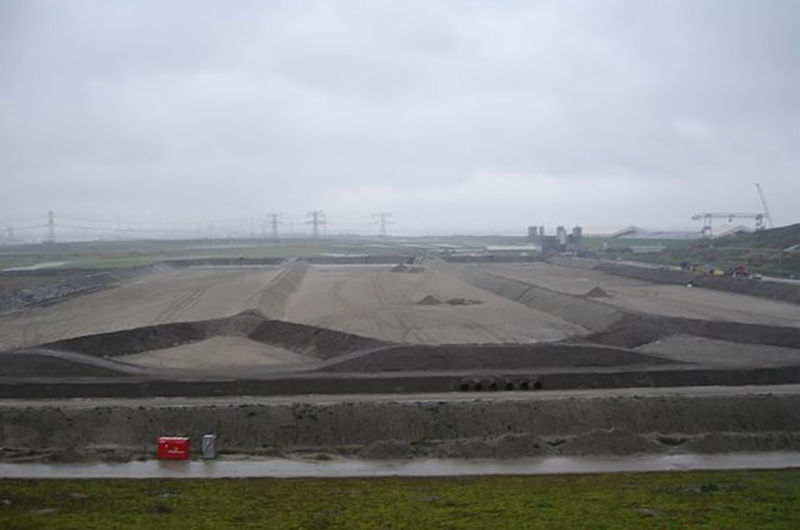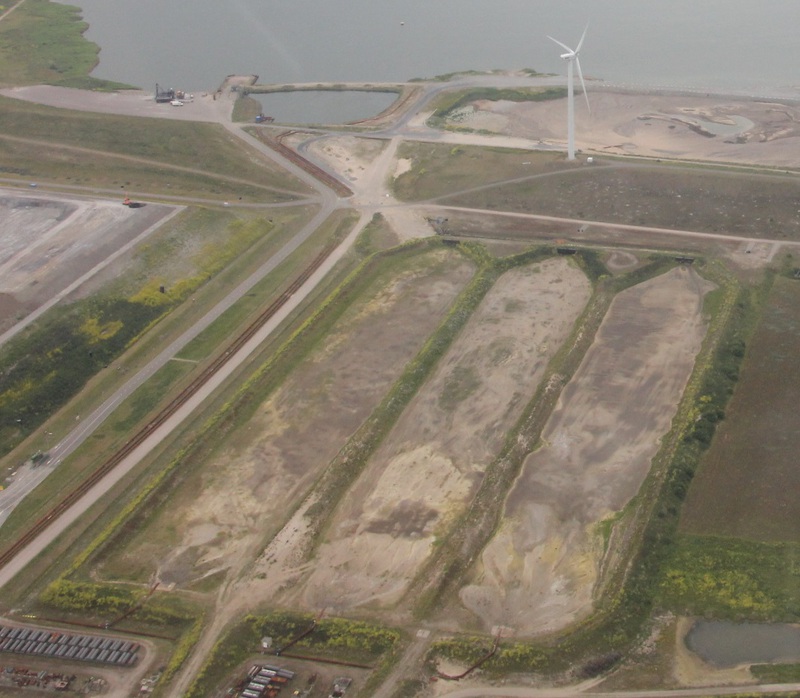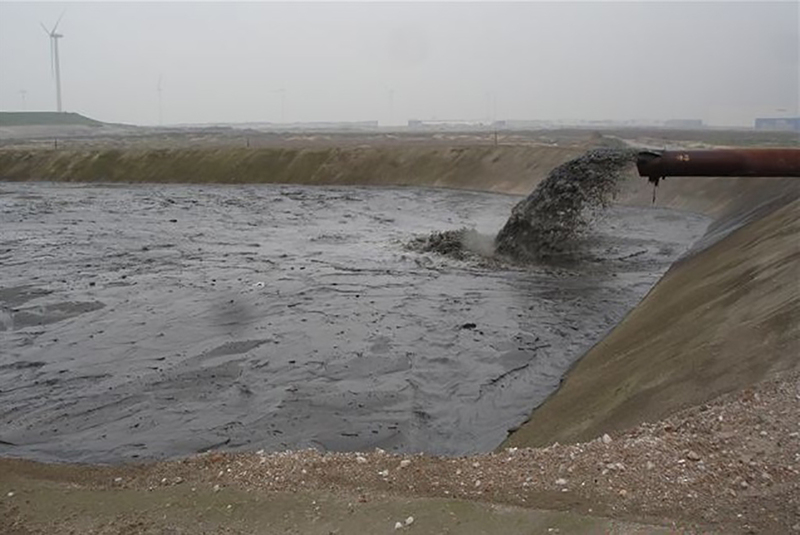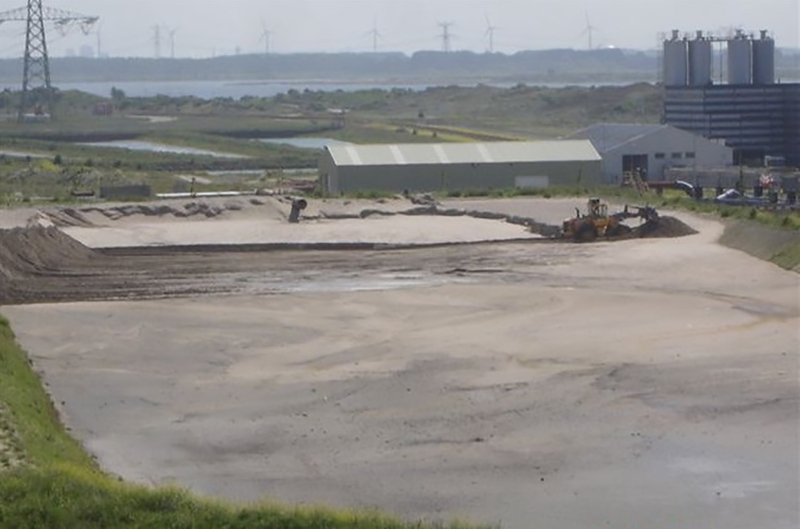Reclamation of clean sand
In general, many contaminants (except perhaps mineral oil and PAHs) tend to stick to finer silt and clay particles rather than coarser sandy sediment. Using this principle it is possible to derive clean sand from mixed contaminated sediments through a process of ‘sand separation’. This is done at the ‘Slufter’ at the Port of Rotterdam. Since 1993 pilot projects have been undertaken while in 2006 construction started on three large sand separation basins.
The principle of the basins is simple. Firstly, a mixture of dredged sediment and water is pumped in at one side and allowed to flow to the other side. As the slope is 1:35 to 1:20, the mixture moves slowly enough to let sand particle settle but keep clay/silt in suspension. At the end of the basin the ‘water-sediment mixture’ passes into a discharge ditch from where it is pumped to a storage location. This process is performed until the basins are completely filled with sand.
After this, samples are taking from the sand to determine their quality. This was found to vary. Sand deposited at the start of the basins was clean enough to use everywhere (no contaminants were found). In the middle it was clean enough to be used in residential areas (small amounts of the contamination). At the end it was classified as clean enough to be used in industrial areas (a bit more contamination was found). This change occurs because there is a gradual reduction in the flow speeds along the basins such that the larger clay and silt particles have more time to settle further along the basins.
Sand from the Slufter was used for elevating fields and as foundations for cycle paths. Although it was clean there were problems with its physical properties of the sand. The particles were round and therefore building large and high features was not possible.
A review in 2014 concluded that the process was too expensive and the benefits for the environment weren’t as high as expected. This was mainly due because of the amount of equipment that had to be used to excavate the separated sand from the basins. These also had a very high carbon footprint. Ultimately, because of the round particles and the large transport distances there wasn’t much demand for the sand.
Graphical information:




References/web links
- Zand uit Baggerspecie; Tweede Gebruikssessie Sedimentatiebekken (1994), Gemeentelijk Havenbedrijf Rotterdam, 16 oktober 1995
- Zand uit Baggerspecie; Toepassing Sedimentatiebekkens, Derde t/m Vijfde Vulling (1994-1996), Gemeentelijk Havenbedrijf Rotterdam, december 1997.
- Zand uit baggerspecie; de invloed van zandonttrekking op de consolidatie eigenschappen van specie. (ook Slufter monsters). Akwa/DWW, februari 1999
- Demonstratieproject mechanische zandscheidingsinstallatie Slufter. Eindevaluatierapport concept 2 dd 6-12-99, Ingenieursbureau van 't Hoff
- Hergebruik van baggerspecie Zandwinning met behulp van scheidingstechnieken, Projectplan demonstratieproject zandscheiding op de lokatie Slufter. Rapportnummer PDWW-94503, Rijkswaterstaat, Dienst Weg- en Waterbouwkunde, 1994.
- Demonstratieproject Zandscheiding Slufter, Milieuhygiënisch onderzoek mechanische zandscheiding fase 1 en 2, Ingenieursbureau van ’t Hoff/lngenieursbureau Gemeentewerken Rotterdam, maart 1997
- Zand uit baggerspecie. Evaluatie praktijkproef zand uit baggerspecie op de Slufter 1993-1998. GHR/RWS, september 1999
- Demonstratieproject Mechanische Zandscheiding Slufter; eindevaluatie, Rijkswaterstaat
- directie Zuid-Holland, februari 2000